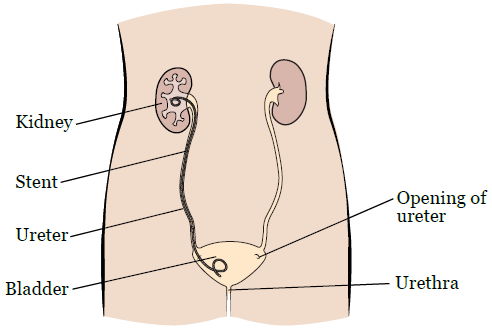Information About Your Ureteric Stent
Diagram of where a ureteral stent sits in your body after surgery. (Source: Memorial Sloan Kettering)
You may have a ureteral stent placed after your surgery. While you have your stent, you may experience the following symptoms:
Increased frequency and urgency of urination
Some people may also experience some incontinence
Discomfort with urination
Lower abdominal or flank pain
Passing blood or small clots in the urine
In order to decrease these stent-related symptoms , you may have been prescribed medication to take. You should also follow these instructions:
Within the first 48hr after your procedure:
Drinking at least 8-10 8oz glasses of water per day
Limit physically demanding activities (including no lifting > 20lb or abdominal straining
After 48hr:
Continue to stay hydrated
If you notice more blood in the urine, drink more water to “flush” this out
You can gradually increase your activities back towards normal. If you notice more discomfort or blood in the urine, back off what you are doing and rest
Limit spicy foods, caffeine, and alcohol
Avoid constipation
Warning signs that should prompt you to seek urgent medication attention:
Fevers (temperature > 38° C) or chills
Foul smelling or cloudy urine
Inability to urinate
Severe worsening pain
If your general condition worsens and you are concerned you should call the office to schedule a stent removal
